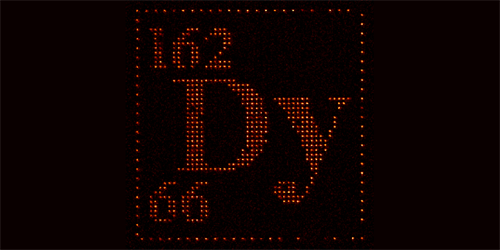It’s a Trap—for Lanthanides
Manipulating individual alkali and alkaline-Earth atoms using optical tweezers has made a broad range of quantum physics experiments possible. Damien Bloch of the University of Paris-Saclay and his colleagues now extend the technique to the lanthanide group of atoms, which have more complex electronic configurations [1]. By successfully trapping single atoms of dysprosium (Dy)—known for its substantial magnetic moments and large total spin—the researchers offer a new tool for exploring quantum magnetism.
An optical tweezer traps a single atom in the electric field generated by a laser. An atom within this field becomes electrically polarized and moves to the laser’s focus, where the field is strongest. The stronger the atom’s induced dipole, the stronger the trapping potential. Imaging this atom adds a complication, however. An atom’s polarizability and trapping potential vary depending on the atom’s electronic state. But the imaging process typically involves two states since the atom must be excited in order to emit a detectable photon when it returns to the ground state. The imaging process is also complicated because the electric field shifts the atom’s energy levels, meaning that the imaging transition—already narrow for Dy atoms—varies throughout the tweezer.
Bloch and his colleagues solved these problems using a peculiar property of lanthanides: the strength of the atom’s dipole induced by the laser’s electric field depends on how the laser light is polarized. They placed a cold gas of Dy atoms into a five-by-five tweezer array whose lasers were polarized such that the Dy atoms’ ground and excited states experienced the same trapping potential. The pattern of fluorescence produced when the trap was exposed to another beam confirmed that the team had trapped an individual Dy atom in each well of the array.
Lanthanide gases have been used to study dipolar physics and topological states. Controlling them in single-atom tweezers offers new possibilities for exploiting their specific properties.
–Rachel Berkowitz
Rachel Berkowitz is a Corresponding Editor for Physics Magazine based in Vancouver, Canada.
References
- D. Bloch et al., “Trapping and imaging single dysprosium atoms in optical tweezer arrays,” Phys. Rev. Lett. 131, 203401 (2023).




